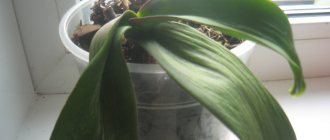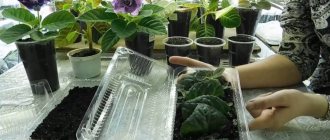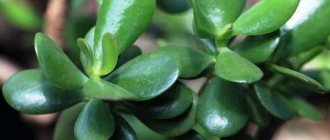Fuchsia (lat. Fuchsia) is unique in that it has the property of self-regulation of water metabolism and assimilation of carbon dioxide. Every gardener who has dealt with it has at least once encountered negative manifestations of fuchsia. With good care, the plant suddenly began to shed its leaves, dry out, and the leaves curled. Some gardeners joke that in this way the flower protests against unsuitable conditions. To save the beauty and restore the healthy appearance of a plant, you need to know its features.
Fuchsia is sick, although care is good
Inexperienced gardeners complain that the plant sheds leaves and buds, dries out, and the leaves tend to curl. The reasons for the poor condition are unclear, because they water it abundantly. Then it is necessary to identify why fuchsia leaves curl inward and what to do to restore it.
Fuchsia is a moisture-loving plant, but it does not like high humidity.
The plant's leaves curl
Useful tips for flower growers
A few useful tips will help you avoid mistakes when growing fuchsia:
- In summer, the root system overheats. To avoid this, the flower is planted in ceramic pots with thick walls.
- In order not to expose the plant to stress, it should not be moved to another place unless absolutely necessary.
- A lack of light leads to strong elongation of shoots to the detriment of flowering. When such a tendency appears, you should periodically turn on the fluorescent lamp.
- Excess fertilizer, especially nitrogen, leads to an increase in green mass. Therefore, feeding more often than once every two weeks is not recommended.
It is important! In order for the plant to recover faster from the influence of unfavorable factors, it is sprayed with a growth stimulator.
An important nuance when growing fuchsia is creating the right conditions in winter. It is better to place the pot in the basement or pantry, because the flower does not need light at this time. An insulated balcony is also suitable, but direct exposure to the sun is undesirable. The main reason why fuchsia dries during the dormant period is excess light and water. Because of this, spots with a yellow border are formed.
Thus, there are several reasons why fuchsia leaves wither and fall off. This is a violation of the rules of care or illness. If measures are taken in time, the plant will quickly recover.
Source: 7ogorod.ru
Causes of leaf falling
The flower reacts to any ailment by dropping leaves. But there are times when leaf loss is considered normal, for example in winter. The reasons for leaf fall are:
- new place;
- too much moisture;
- overdrying;
- flowering period;
- changes in humidity.
Gloxinia leaves curl - what to do
If a plant is moved to a new location, it needs time to adapt to the lighting. It becomes clear why fuchsia withers in a pot. The flower reacts painfully to changing conditions, but quickly returns to normal.
Important! Excessive watering causes root rot. Damaged roots are removed.
Moisture deficiency also leads to leaf loss. Soil drying out occurs due to air temperatures above 20 degrees. The plant does not like overheating of the soil. If the soil is dry, then it needs to be moistened gradually. To alleviate the condition of fuchsia, you can spray the leaves with a spray bottle.
The tips of the leaves dry out due to changes in humidity when the fuchsia has not acclimatized to a new place.
Leaves curl due to bright light
How to identify a problem by external signs
Why do violet leaves curl inward?
In the case of flooding or under the influence of sunlight, fuchsia exhibits similar external manifestations. The leaves become wilted and drooping. Bay is excluded if the flower comes to life in a cool place.
If fuchsia begins to fade, drops leaves and buds, then, apparently, it was moved to a new place and it needs time to adapt.
If a powdery coating is observed on the reverse side of the leaves, and the buds begin to fall off, then the plant has been attacked by pests. Lack of flowering and slow growth are associated with a low content of nutrients in the soil.
Brown spots on the leaves are due to sunburn, wrinkling of the leaves is due to watering with cold water.
During the flowering period, it is important to fertilize the soil
Diseases and pests
Fuchsia is resistant to disease, but high humidity leads to the appearance of small dewdrops on the leaves. The plant can be treated with a solution containing Fundazol in a ratio of 11:1.
Why do hydrangea leaves curl and curl up?
Dangerous pests include aphids, spider mites, and whiteflies. Aphids can be seen from above on young stems and buds. Aphids suck the juice from the plant, the leaves curl and become dry. The drug Decis fights well against aphids.
Important! Aphids are firmly attached to the stems due to the secreted sugary substances. Infected stems must be separated from healthy ones.
Insufficient watering
Poor watering negatively affects the well-being of fuchsia; the leaves become dry. Especially at high air temperatures. Looking at the top layer of soil, which dries into dust, it is clear why fuchsia withers. The soil should be moistened with small portions of water.
Nutrient deficiencies
Fuchsia needs feeding all year round, except winter. A deficiency in nutritional ingredients affects the health of the plant, the leaves turn yellow, and the plant stops blooming. Fuchsia leaves are falling, what should I do? - feed. Fertilizers are added once a week, starting in March. When the fuchsia fades, take a short break, then feed again.
It is important to transplant cuttings into soil rich in beneficial microelements.
Fuchsia dries
Dv! I didn’t start a new topic because I have similar problems with fuchsia. So this means: I bought a mature fuchsia a month ago (it has a lignified trunk). It looked like a nice, strong mini-tree with a thick crown. I bought it in a home-grown greenhouse, not knowing the variety or what color it would bloom (the owners don’t bother with this). Grows in a liter-sized pot, garden soil. I brought her home and put her in quarantine. I didn’t change the soil/pot, because I learn from my mistakes, I have bitter experience. And lately I’ve been adhering to the principle - since the plant was purchased in good condition, it means that both the pot and the soil that I got along with the flower from the previous owner like it and are suitable for this plant, so I don’t touch it. A few days later she felt a “climate change” and decided to shed a few leaves, and then completely lost her turgor. Out of fear, I watered it generously, sprayed it into the bag. I made holes in the bag with a toothpick. As a result, it feels good under the bag, all the leaves that remained after the primary leaf fall were preserved and the turgor was restored. Periodically I remove the package, but, alas, the turgor is lost again. and everything is all over again. I understand intellectually that she needs time to adapt - the greenhouse/apartment. But a month has already passed of taking off/putting on the bag, when will she calm down and get used to my living conditions? Please advise how to accustom fuchsia to life without a bag.
Pysy: I bought an angel (pelargonium) there. Same problem. I don’t know whether to ask here or in the topic about Pelargoniums? I just know that Greenata is an ace in both fuchsias and pelargoniums.
Grinata, thanks for the advice! There is a glass balcony, but it is cold there, just like outside. I’ll just move it to the coolest window!
I’ll enlarge the holes - really, I didn’t realize it myself.
Yesterday I sprayed it with epin and again under the bag. The turgor is good, it does not shed leaves.
Should I replant it from hard rock soil and a large pot, or should I just leave it out of harm’s way?
| Quote |
| musaya writes: Should I replant from hard rock soil and a large pot or should I leave it alone out of harm’s way? |
Could you write where you live? It’s hard to answer without knowing your climate!
| Quote |
| Davydenkova writes: To say that the year is not suitable for fuchsias is nonsense. |
This is the second year that summer has not been suitable for fuchsias, at least in Moscow, and this is not nonsense, but a fact. Although this year is much better than the previous one. The optimal temperature for fuchsias in summer is about +20, higher even in the sun, and with good watering, root rot is almost inevitable. Without the sun at high temperatures with good watering - a struggle for survival of the fittest.
The leaves hang like a rag more often from the heat and dry air, and not from the dry substrate; you should not immediately grab the watering can. Check the moisture content of the substrate with your finger, two centimeters deep into the pot. The top layer of soil in the pot should dry out by 2 cm between waterings, and not be constantly wet, even slightly! My fuchsia pots often dry out so much that the fuchsia pot weighs nothing at all (the substrate is based on high-moor peat), this is of course not good, you can destroy the root hairs, but the fuchsia does not hang leaves if the temperature is within the normal range. But in the heat, they immediately hang like rags, even though there is enough moisture in the pot. I just try to lower the temperature and spray fuchsia more often.
| Quote |
| Davydenkova writes: After the death of one, all the cuttings and adult bushes died in one way or another. Whatever I did, I brought it into a cold room and sprayed it with epin, there were no pests on more than one bush, but they died one by one. |
Epin is not a panacea for the death of a plant, but only a help to cope with stress more easily. And if the roots have already begun to rot, no amount of epin (or zircon) will help. Epin is used before. stress. For example, the day before transplanting plants or before expected frost, heat, darkness, etc., and not after what happened.
| Quote |
| Davydenkova writes: Then I ordered from Moscow - good, fat cuttings arrived, with good root. I didn’t replant in the heat, because there was still room for the roots in the cup. I took them to an air-conditioned room. I watered it with zircon and sprayed it. It seemed like they started to grow, but then they all died as one. |
Why did you water it with zircon? What was the bad root system? Or did you try to stimulate flowering or fruiting? What size were the cuttings? The purpose of stimulating cuttings with Zircon? What was the dosage of zircon? An overdose of zircon should not be allowed.
For reference only: Zircon and Epin cannot be used at the same time. At least 10 days must pass after using one of the drugs. And if the first drug was Epin, then it is better to wait 14 days, since this is exactly how many days are needed for Epin to disintegrate in the plant. There is no point in treating plants more often; you will only make things worse. These drugs have slightly different functions (one before stress, one after stress). Moreover, after stress, the plant must be allowed to revive on its own! And don’t finish it off right away with stimulants.
| Quote |
| Davydenkova writes: In short, I was angry that I spent almost 10,000 on this entire farm during the spring and summer, and that I just recently brought myself 10 new cuttings. I think maybe in winter, like those first ones, they will trample. But 2 of them have already died. A similar story - the roots are good, I transplant them into pots that are 1/2 inch larger and after a few days the leaves wither and fall off and the plant dies. |
I suspect that when replanting you watered it, if not with zircon, then with just water. But there is no need to do this. After transplanting, do not water for 10 days. But everything is done without fanaticism, that is, check the condition of the substrate, and if it is very dry, you can very carefully water it earlier, again without fanaticism! It is better to spray more often rather than water. First, you need to let the cuttings get used to the new conditions, you can spray them with Epin, check the substrate, and if the top layer is wet, don’t water it! They will take root better in a slightly dried substrate! And then, depending on the age and growth of the cutting, stimulate it by spraying or watering. But with a good root system, why water? If the cutting is too early to bloom and has not gained green mass, why stimulate flowering? You weaken the plant with this.
I read your post about the dogma about watering, and the myth about white fluffy roots (root hairs).
In the future, when the plant is hanging its leaves, and the substrate in the pot feels wet to the touch, remove the plant and check the roots. If there are white or gray root shoots, you can place the plant back in the pot with peace of mind. If there are no root hairs, sound the alarm! Here you can comb the earthen substrate with a fork in order to find root hairs, if there are none deeper, then find a slightly thicker root and cut it off or scrape off the root covering tissue with your fingernail, if the inside of the root is white, then almost everything is with the roots the plant is in order and almost healthy, you just need to balance the watering. If the color under the covering tissue of the root is brown, then the root has rotted. Here you will have to fight for the plant. Rotten roots must be cut back to healthy tissue, if possible, shake off the entire substrate and plant the plant in high clean peat (without impurities or any additives), trim the plant according to the root system.
| Quote |
| Davydenkova writes: And where is the dogma about sufficient watering and not overwatering? |
We kindly ask everyone who writes by e-mail, do not consider it difficult to sign EVERY letter with your NAME AND NICK.
Source: www.flowersweb.info
Plant requirements for lighting levels
Fuchsia does well in diffuse sunlight at the beginning and end of the day, but suffers from the heat of the day. For lush flowering at home, create a balance between intense daylight and shade from the scorching rays of the sun. Varieties with bright flowers require more light; they happily stand in the open sun. Fuchsias with inflorescences of delicate shades love to be in lace shade.
To place fuchsia in an apartment, choose windows on any side except the south. Otherwise, the fuchsia leaves will fall off.
Due to high humidity, the flower looks sickly
In hot weather, fuchsia leaves become limp and drooping
If this repeats for several days in a row, and the flower is restored overnight, then the cause of this phenomenon is a lack of moisture, since in the heat evaporation processes outstrip the ability of the plant to absorb water. In this case, sprinkling will be your salvation. The more often the better. The only condition is to ensure that the leaves do not burn as a result. This is possible if, after spraying with water, the wet foliage comes into direct sunlight.
Light-colored fuchsia is demanding on living conditions
But fungi, of which there are hundreds of varieties, can also cause similar symptoms. They survive both in Arctic conditions and in the hottest times in the desert. The ideal breeding conditions for them are a temperature of 25-30 ℃ above zero with high humidity. Fungal spores persist in soil debris for many years. Seeds can also be a source of infection. As a result of seed infection, the plant becomes sick even at low temperatures. The disease spreads upward from the roots, causing the fuchsia to wither.
Important! The disease can be triggered by injuries during planting and transplantation, or from insect bites.
Rules of care during the flowering period
After wintering, the plant needs help for healthy flowering. Dried leaves are trimmed and dead flowers are removed. Branches that have grown inside are taken out and removed.
During the flowering period, growth retardation and absence of flowers are often observed. This occurs due to poor soil and insufficient nutrients. The plant requires potassium and phosphorus, so it needs to be fed.
Fuchsia has an actively developing root system. The pot should be spacious.
Nutrient deficiencies
Fuchsia is sensitive to soil fertility. The effect of a lack of essential microelements affects the growth rate of plants.
Lack of iron and other microelements
The consequences of a lack of microelements are manifested:
- Potassium. Weakened immunity, underdeveloped roots, decreased absorption of water and nutrients. Small holes on senescent leaves.
- Phosphorus. Weak growth, lack of flowering. Redness of leaves.
- Nitrogen. Acceleration of the beginning of flowering. The leaves are pale in color, turn yellow and fall off.
- Iron, manganese. Discoloration of leaves, increasing in proportion to the distance from the vessels.
- Calcium. Tendency to curl leaves with a spoon.
Note! Fertilizer may be less effective in dry and compacted soil.
Plant watering requirements
Excessive watering disrupts gas exchange in the soil and provokes acidification. A mold crust forms on the surface. The root system is deficient in oxygen, the roots gradually rot, and small roots quickly die off.
Competent adherence to watering rules will help to avoid fuchsia diseases. In the spring-autumn season, fuchsia needs good watering if the top layer of soil dries out. In winter, water in the morning, moderately.
In the autumn (October-November), watering is reduced until completely canceled. In the cold season, 1-2 waterings per month are enough for fuchsia.
When it's summer outside, the flower is watered in the evening. Due to morning watering, the roots steam in the damp soil in the heat and deteriorate.
Important! The soil should be kept slightly moist and the leaves should be misted to cool.
Flower growers equip the pot with a drainage system to prevent the soil from acidifying.
For irrigation use settled, soft water. Oxalic acid is used to soften.
Fuchsia flower: how to care at home
Caring for fuchsia involves creating suitable conditions for its growth and development:
- maintaining optimal temperature conditions;
- regular watering;
- application of fertilizers.
Young cuttings are placed in small pots, the volume of which increases as they grow. They are not fed immediately after planting, because fresh soil is saturated with the necessary elements.
Particular attention is paid to the formation of the bush. Some varieties of fuchsia grow up to three meters in height. To prevent active stretching, after wintering, dried leaves and flowers are cut off, and the stems are shortened by a third. Also remove shoots that grow incorrectly - at an angle or inside the plant. In spring, the tips of the branches are pinched.
At the same time, the fuchsia is replanted if the roots grow through the drainage holes. Pots that are too spacious are not used. In such containers, the green mass increases to the detriment of flowering. Sand and humus are added to the soil mixture to make it looser.
It is important! Pots must have drainage. For active flowering, add horn or bone meal (1 tbsp per 1 liter of soil).
Fuchsia is considered a finicky flower, but caring for it is not that difficult. It is necessary to maintain a comfortable temperature, sufficient lighting, watering and fertilizing. The first thing to do when fuchsia withers or drops its leaves is to reconsider its care measures.
Temperature and watering requirements
The optimal temperature during the period of active growing season and flowering is +18…+25°C. In hot weather (above +30°C), leaves fall off. Plants may dry out. Direct sunlight also has an adverse effect. It is better to cover the windows with curtains.
In autumn, the temperature is lowered to +10...+12°C, because the plant enters a resting phase. It should gain strength to bloom in the new season. If it gets hotter, the leaves will become smaller and the flower will get sick.
Watering home fuchsia
Fuchsia always needs sufficient watering, except in winter. The earth is moistened as soon as the top layer of soil dries - approximately every 3-4 days. It is necessary to maintain a balance - the plant does not tolerate drought, but also does not like excess water. If liquid accumulates in the bottom tray of the pot, drain it immediately. In winter, the frequency of watering is reduced to 2-3 times a month. The optimal indoor air humidity is 50-60%.
When flooding occurs, the following signs appear:
- limp stems, leaves and inflorescences;
- brown spots on shoots.
How to properly revive fuchsia:
- move to the shade;
- remove excess water by placing a paper towel or a container of sand under the pot;
- transplant into new soil - light, saturated with oxygen.
In advanced cases, when the flower cannot be saved, only cuttings can help.
The plant responds well to spraying of green mass during the growing season. The procedure is carried out early in the morning or late in the evening, when there is no direct sun.
It is important! Water only with clean, settled water. Hard tap liquid causes yellow leaves to form.
Lighting requirements
For normal growth of fuchsia, a sufficient amount of diffused light is needed. The pot should not be placed directly in the sun. She does not like heat - the leaves may turn yellow. The flower is placed in the eastern or western part of the house. If the windows face south, it is shaded, and if it faces north, it is illuminated with fluorescent lamps.
It is important! Fuchsia cannot be moved while it is flowering - it will drop its buds.
Rules for fertilizing and feeding fuchsia
The plant is regularly fed. The exception is winter time. Gardening stores sell fertilizers for fuchsias and flowering plants.
The nutritional mixture is used once every two weeks. It is diluted in water according to the instructions and used instead of regular watering. Before flowering begins, you can spray the leaves with this solution. After wilting, no fertilizing is applied. Then the process is resumed.
Ambient temperature requirements
Fuchsias respond painfully to heat. In summer weather, the leaves become limp and flabby. For healthy flowering you need a temperature in the range from +18 °C to +25 °C. It is difficult to create optimal conditions in an apartment in the summer. Therefore, the plant is placed on a loggia, terrace, in the shade, where the burning rays of the sun will not reach it and the leaves will not begin to curl.
The plant will respond with gratitude for good care.
Sometimes fuchsia is planted in open soil outside. But if the air heats up to 30 °C, the plant will instantly shed its leaves and begin to ache and dry out.
A ceramic or porcelain pot will help protect the roots from overheating. A plastic container for flowers heats up, while a ceramic one keeps it cool.
Important ! In the summer heat, the fuchsia root system will be perfectly preserved in a spacious ceramic pot. It remains cool in the heat and protects the plant roots from excessive overheating.
How to save fuchsia after flooding?
Waterlogged soil causes flower weakness. The leaves look sick, they are limp and drooping, and may curl. Without rescue measures, the condition of the flower worsens, even to the point of death.
If you detect signs of flooding at the initial stage, the plant can be revived.
When a flower feels good, she delights with beauty
Experienced gardeners advise beginners to use a paper towel, root rot remedy, and phytosporin. The procedure is as follows:
- treat the soil with an anti-rot agent;
- remove the fuchsia from the pot, wrap the roots together with a lump of earth with a paper towel in several layers;
- after an hour, wrap again;
- leave the plant in the winding for 3-4 weeks;
- water when the earthen ball becomes dry;
- For watering, take a solution of phytosporin.
After all the steps, when new leaves appear, return the plant to the pot.
Important! Fuchsias most often disappear due to improper watering.
Thus, it is important to comply with all fuchsia care requirements. During flowering, it is forbidden to change the usual conditions - rearrange, rotate, block daylight or, conversely, expose the flower to the sun. The plant is capricious, sensitive to any changes in the external environment, it can drop its buds or the leaves begin to curl.
Hot chocolate capsules Nescafe Dolce Gusto Chococino, 8 servings
334 ₽ More details
Nesquik Opti-Start instant cocoa drink, 250 g (package)
125 ₽ More details
Wood splitters
Is fuchsia withering? Are the leaves drying out and falling off? Saving fuchsia from the bay!
One of the most common causes of death of fuchsia in the summer is the bay.
The importance of proper watering for fuchsia cannot be overestimated. This is the basis of a healthy and strong plant.
Signs of the Bay
- The shoots droop
- The leaves wither, then become covered with brown spots, dry out and fall off.
- Flowers and buds crumble
In hot weather, fuchsia leaves become limp and drooping
What's going on? Fuchsia has a water regulation system that allows the plant to close its stomata and thus prevent water loss. But the stomata must be open to allow carbon dioxide to pass through for photosynthesis. Therefore, the plant has to balance between water loss and carbon dioxide assimilation.
The stomata open early in the morning. Around noon they begin to close and close completely just before sunset. On very hot days, at temperatures of 25°C and above, the stomata are open for a very short time in the early morning and closed for the rest of the day. The same thing happens if the plant does not have enough water: the stomata are open for a very short time in order to conserve water. In such conditions, respiration and photosynthesis stop and the leaves no longer cool through the process of evaporation - as a result, the plant withers.
Watering fuchsia abundantly in this state is a guaranteed death of the plant.
Watering when the plant's stomata are closed can lead to death, because the closed stomata cannot ensure the movement of water to the leaves
The best thing to do for a drooping plant in the sultry heat is to spray the leaves.
Spraying cools the leaves and helps keep the stomata open longer. You should also do this on hot days to prevent the leaves from wilting. Proper misting during hot weather also helps keep the stomata open longer and thus support plant growth. Fuchsia should be sprayed in the shade!
Proper watering
So, it is important to water in the early morning. Watering in the afternoon can do more harm than good. At this time, the stomata are closed, and the roots will remain in water all night and may rot.
How to save fuchsia after flooding?
If you notice these signs of flooding on your fuchsia, save it immediately!
- Leave the plant in the shade.
- Remove excess water from the soil as quickly as possible. This can be done by placing the pot on a pack of napkins, newspaper, or dry sand.
- Also, an emergency transplant into new, light and airy soil can solve this problem.
- Do not water the plant, just spray it with a spray bottle. Until the roots recover from the flood, they cannot fully absorb water from the soil.
- It makes sense to cut the cutting and put it to root. If the plant cannot be saved, the cutting will give life to a new fuchsia.
So, you can save fuchsia from flooding if you eliminate the cause as quickly as possible. And once faced with this situation, you will no longer allow fuchsia to overwater, especially in the heat.
Source: www.fuchsia.moscow











